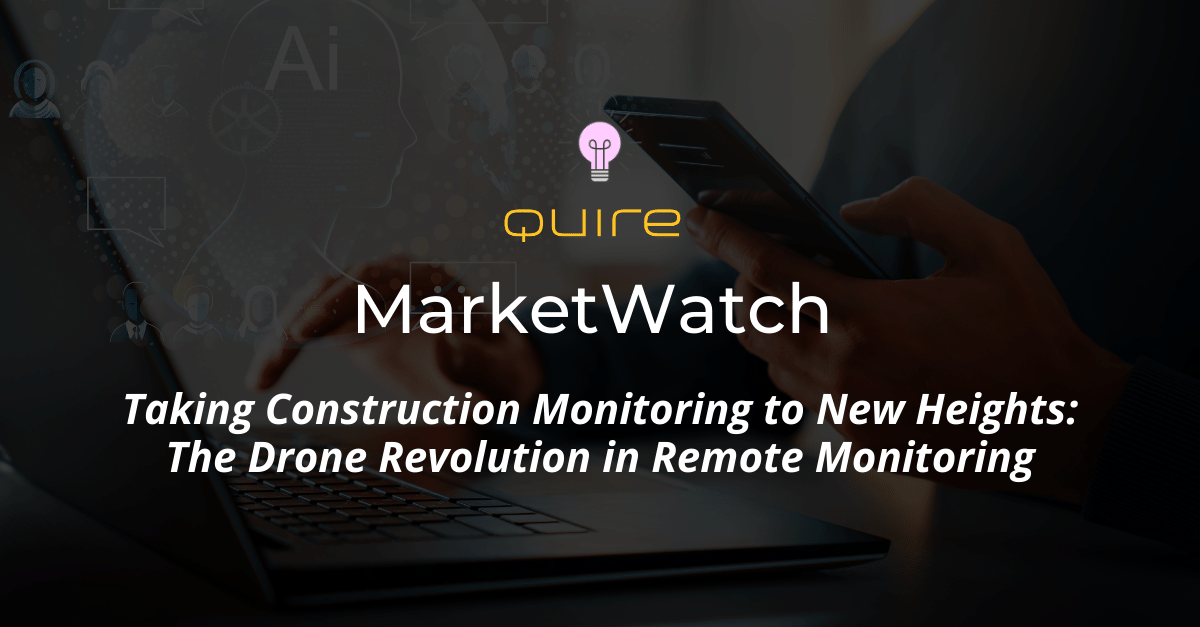Taking Construction Monitoring to New Heights: The Drone Revolution in Remote Monitoring

For years, Quire has analyzed tens of thousands of Reports from dozens of market lines generated all around the world. As Quire works to provide productivity-enhancing solutions, we’re fully immersed in Technical Report Writing, enriching our understanding of the industry and our Clients’ workflows. We’ve created MarketWatch as a way to share industry trends and insights with report-writing professionals both in and outside the Quire solution.
In recent years, the use of drones in the architecture, engineering, and construction (A/E/C) industry has increased as drones have provided valuable new insights and streamlined reporting and mapping processes. In this Technology Spotlight, we focus on Integrated Drone Solutions (IDS), a nationwide woman-owned small business at the forefront of drone usage in construction monitoring, land surveying and insurance inspections. We explore how drones have transformed the construction landscape.
Download the MarketWatch to learn more: